In 2008, when Cuban American illustrator turned entrepreneur Katie Deedy founded wallpaper company Grow House Grow, the world had turned grey. Collectively, we were covering our walls in monochromatic colours with names like Downpipe and Mole’s Breath to replace beige as our interior comfort blanket. Katie was about to change all that, and over the years Grow House Grow has brought new life to the world of design with a series of fresh, colourful contemporary tiles and wallpapers that come with a story.
Katie was born in the States but has a strong connection to her family’s birthplace of Cuba. Arriving from Cuba in the 1960s, Katie’s mother crafted a successful career as a storyteller and writer. A childhood spent visiting museums notebook in hand set the scene for a life in stories, but Katie was keen to tread her own path. She trained as an illustrator, but realising this wasn’t a direction she wanted to pursue, interned with screen printers to learn the techniques and hone her skills.
Katie then spent several years working with a silk screen printer developing patterns. It was a period of research, exploring the potential of the format for using patterns to create narratives as well as building knowledge of American and European wallpaper standards. Early designs featured stories with subject matters as diverse as female scientists, time travel and unusual pigments. The handmade is central to the Grow House Grow ethos and Katie refers to the Japanese aesthetic philosophy of Wabi-Sabi that celebrates imperfection and sits a world away from the cold repetitive perfection of digital production. All of Grow House Grow wallpapers are hand-screened in New York with an emphasis on quality and craftsmanship.
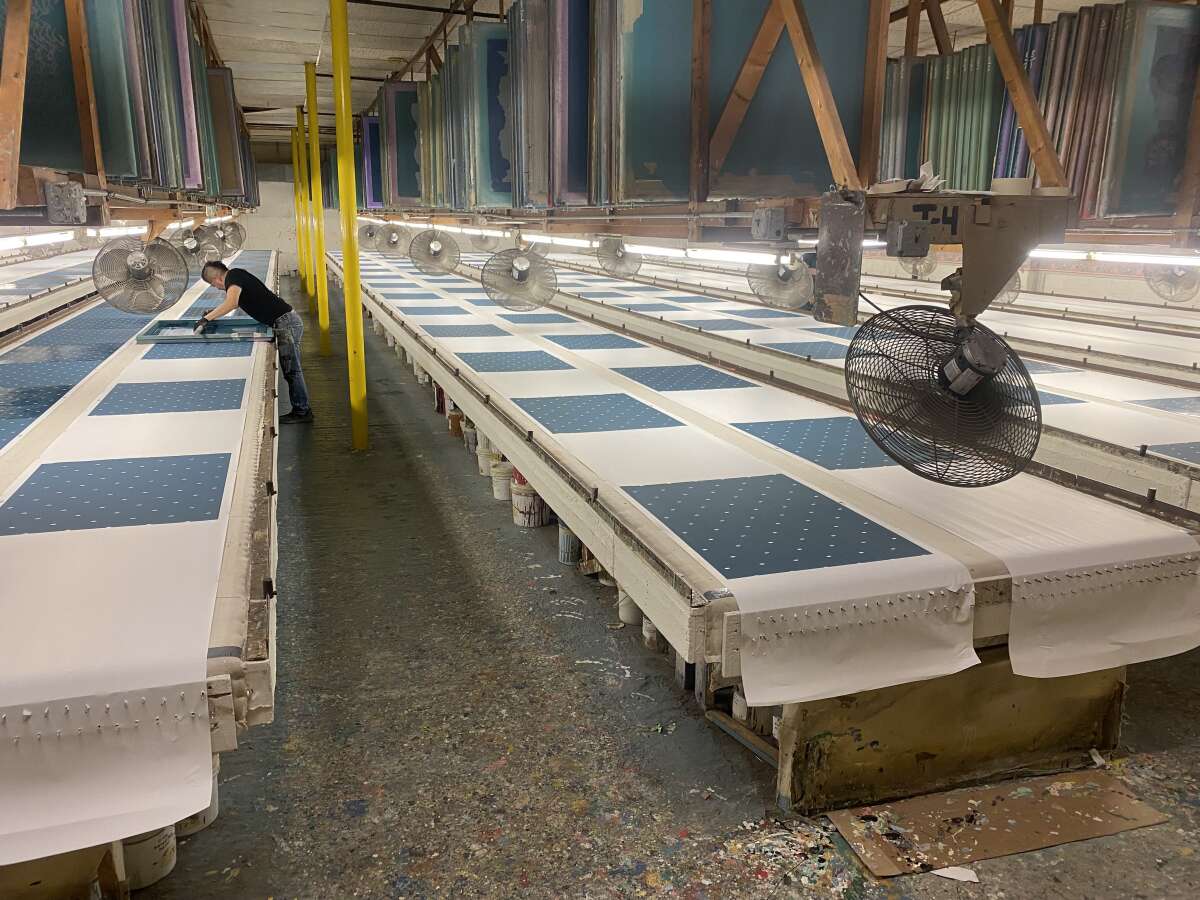 Grow House Grow printshop. Image Credit, Grow House Grow
Grow House Grow printshop. Image Credit, Grow House Grow
Adding tiles to her repertoire seemed a natural progression and allowed Katie to be freer in her designs, embracing the joy and fun of pattern while staying true to narrative. Cement tiles are referred to as Cuban tiles in the US, although the method is followed as far away as Morocco, Mexico and Spain. In Cuba these tiles are used to decorate spaces from the smallest of apartments to the grandest houses. This created the incentive as a pattern maker to manufacture something traditional that held a deep connection for Katie.
The tiles are made from a recipe of cement, sand, marble powder and natural colour pigments. The liquid cement is hand-poured into sections of a bespoke metal mould around quarter of an inch deep to create the distinct pattern of the tile. A layer of Portland cement and marble form a back to the tile which is then manually compacted using a hydraulic press. After immersion in water, the tiles are left to cure, creating tiles more sustainable than their fired counterparts. The resulting tiles are resilient and can be used for both interior and exterior spaces.
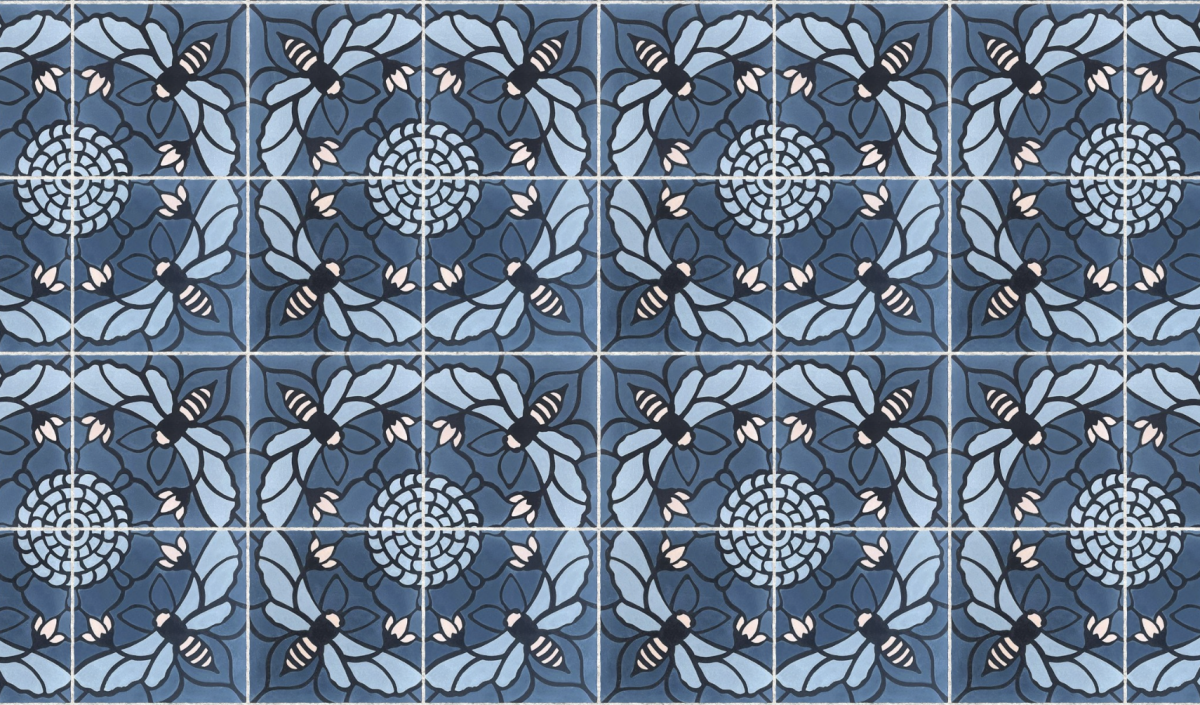 Bee & Skep tiles. Image credit, Grow House Grow
Bee & Skep tiles. Image credit, Grow House Grow
For Katie, this process respects the Cuban heritage of tile making. Ongoing political tensions between the States and Cuba make it impossible to manufacture there. Instead, Grow House Grow tiles are made by a family run business in Mexico who have been making traditional tiles for over 100 years. This sense of a continuity is key to Katie. She cites the idea that you can walk into buildings in Havana or Marrakech and see tiles that could have been there five or 105 years. Katie describes these tiles as having a connection to the energy of the past and likes the idea that her tiles become part of the history of places she may never get to visit.
One of the first tiles Katie designed was Jardin de Luna, a stylised pattern featuring rabbits and deers dancing beneath the sun and moon. The design emerged from Katie’s research into folklore and references the Aztec legend which sees a humble rabbit having offered to sacrifice himself for a hungry God rewarded by being placed on the moon. Honouring this Aztec story seemed a fitting tribute to the place the tiles are made with the pattern going on to become one of Grow House Grow’s most popular tiles.
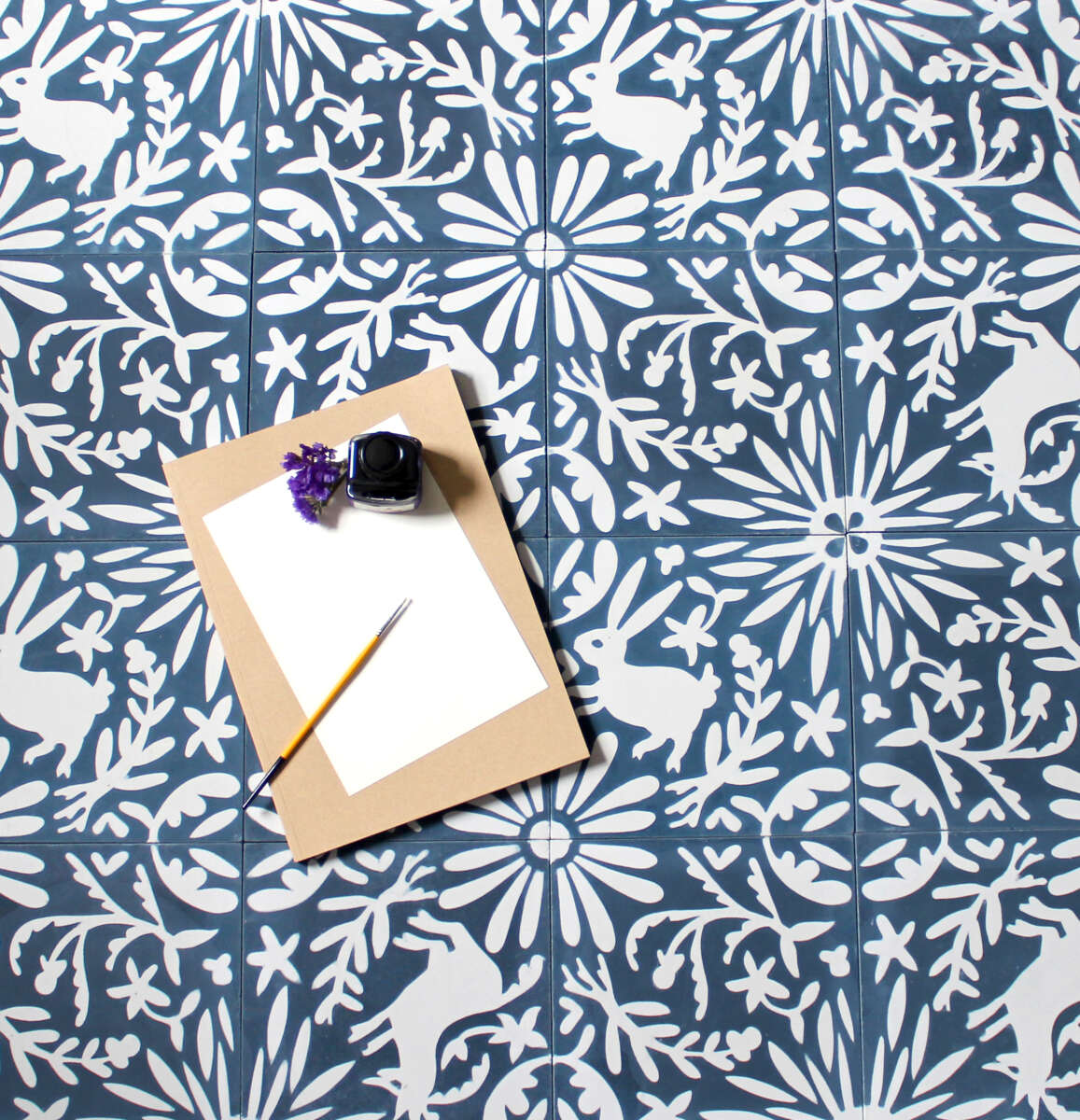 Jardin de Luna tiles. Images credit, Grow House Grow
Jardin de Luna tiles. Images credit, Grow House Grow
Some stories are more personal; the Tropicana tile was inspired by the eponymous nightclub in Havana where her grandparents danced in the 1950s. The club was roofless and open to the stars and Katie’s design while not a visual representation of a starry night captures the magic of music under cloudless skies. It’s easy to imagine her grandparents dancing in the moonlight while Tropicana luminaries Marlon Brando and Ernest Hemmingway held court at the bar.
.jpg?s=1200&q=60) Tropicana tile. Image Credit, Grow House Grow
Tropicana tile. Image Credit, Grow House Grow
Grow House Grow is now an established part of tile making tradition. Contemporary designers are increasingly embracing colour and pattern to create joyful spaces. Katie likes to see her tiles used in intimate and unexpected spaces with curves and nooks, where the beauty of the handmade aesthetic sits well.
Grow House Grow are expanding into Europe through a collaboration with tile company Bert and May. Owner Lee Thornley’s story started with the discovery of traditional Spanish reclaimed tiles while refurbishing an old property near Cadiz. Bert and May now sell reclaimed tiles as well as making their own contemporary lines with local manufacturers. Finding the right collaborator was important to Katie and she recognised in them a care for the process and history of tile making. The partnership will start with three patterns including firm client favourite Montauk Daisy, named in honour of the late blooming waxy leaved daisies native to Japan and China but transplanted to Montauk, Long Island.
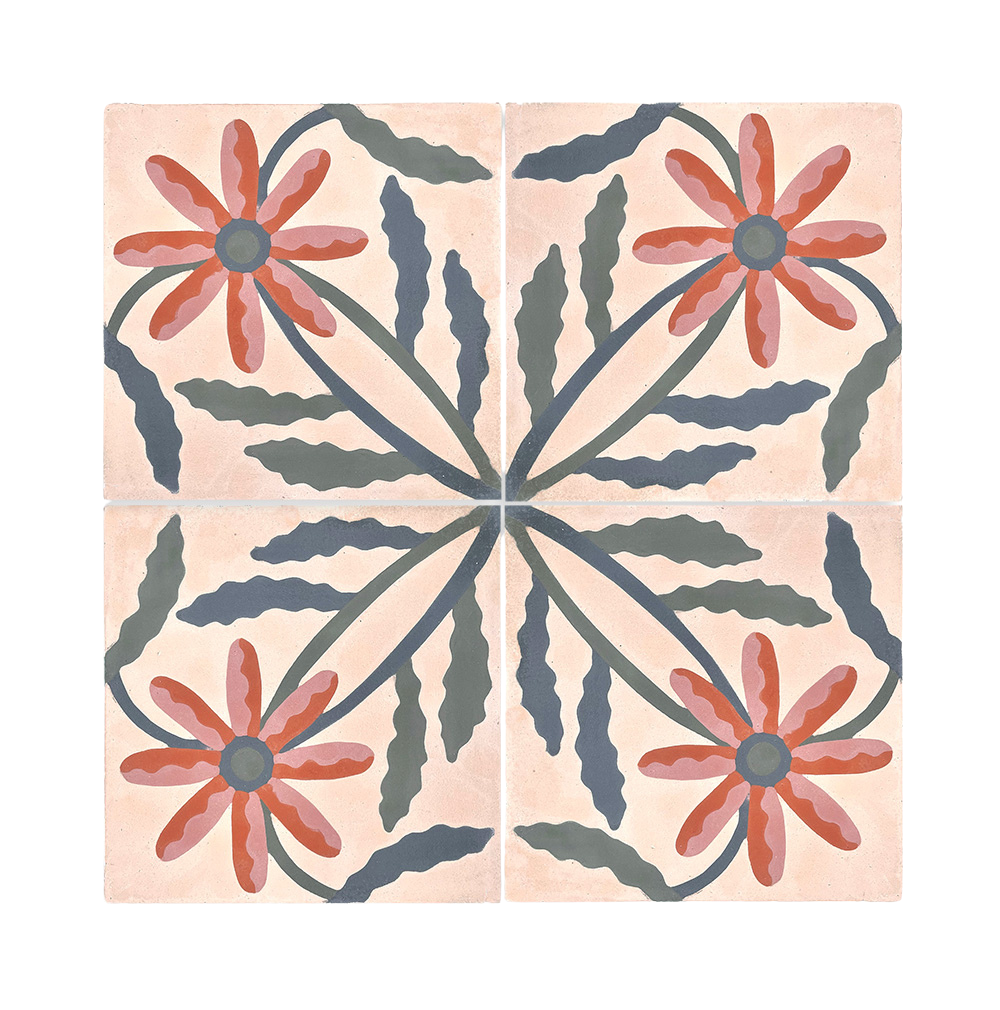
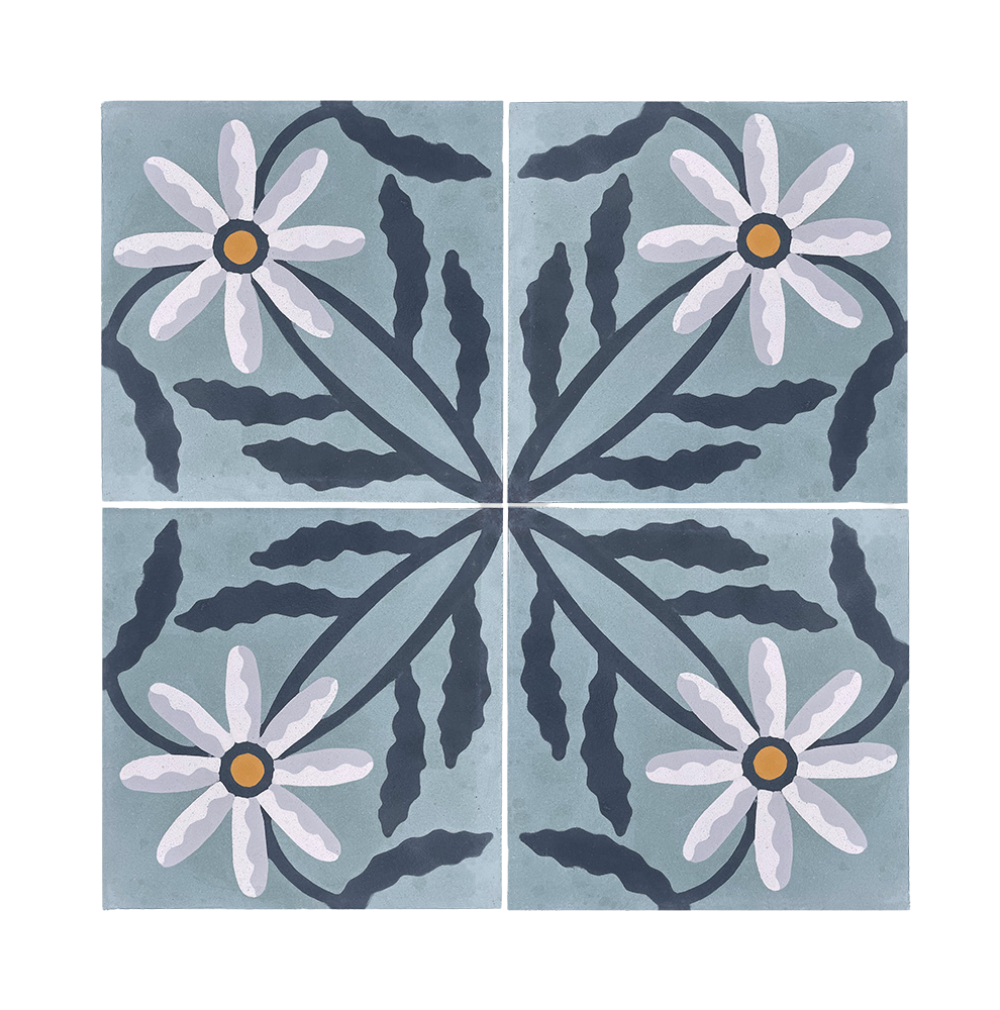 Left: Montauk Daisy Cedar colourway. Right: Montauk Daisy Saltwater colourway. Images credit, Grow House Grow
Left: Montauk Daisy Cedar colourway. Right: Montauk Daisy Saltwater colourway. Images credit, Grow House Grow
Grow House Grow has rightly earned accolades, with wallpapers included in the Brooklyn Museum’s Decorative Arts permanent collection. In a world that can feel relentlessly grey, the colourful universe of Grow House Grow is a salve for the soul, bringing a much-needed reminder that life can be full of colour, joy and stories.
Vanessa Norwood is a curator and consultant for the built environment advocating for low-carbon architecture and materials.

